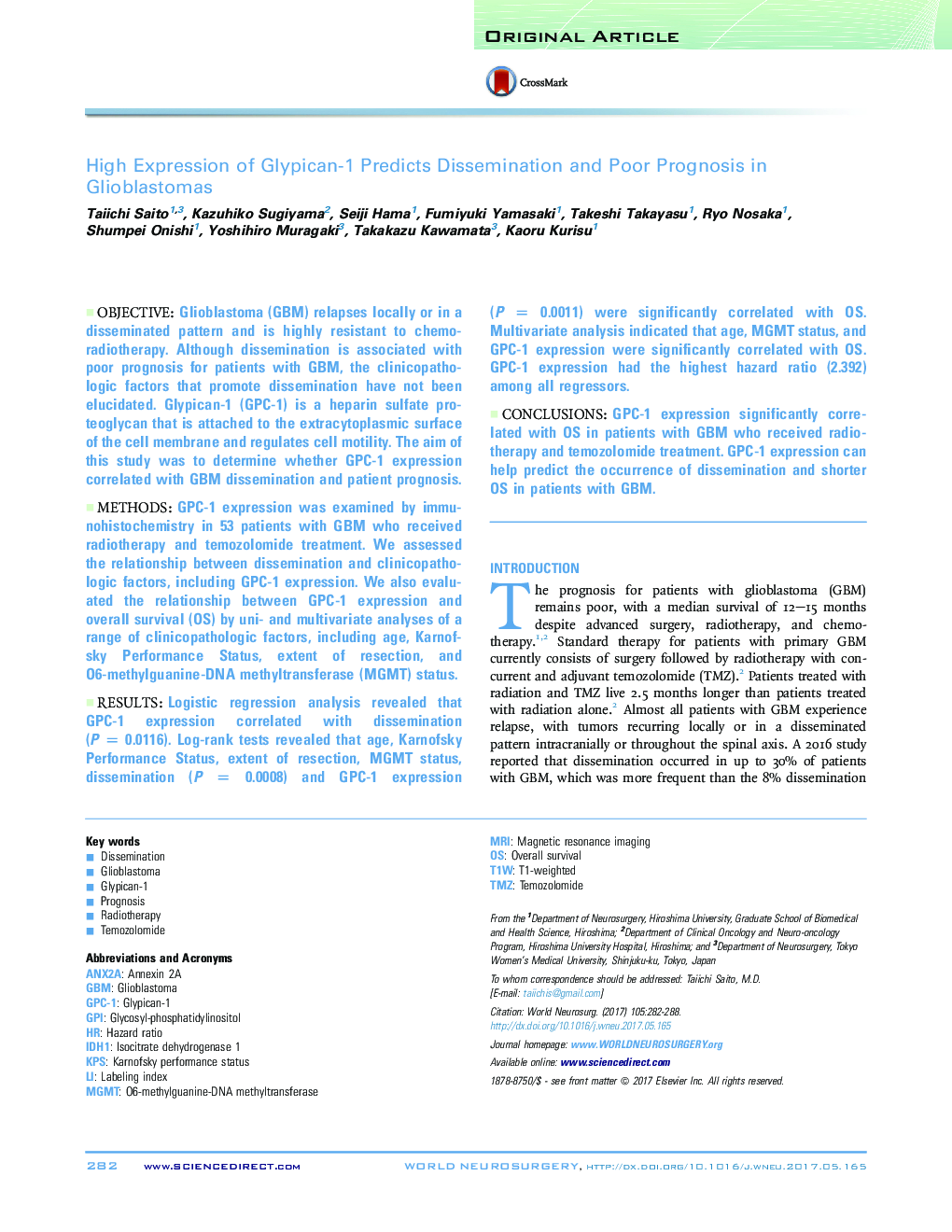| Article ID | Journal | Published Year | Pages | File Type |
|---|---|---|---|---|
| 5634212 | World Neurosurgery | 2017 | 7 Pages |
ObjectiveGlioblastoma (GBM) relapses locally or in a disseminated pattern and is highly resistant to chemoradiotherapy. Although dissemination is associated with poor prognosis for patients with GBM, the clinicopathologic factors that promote dissemination have not been elucidated. Glypican-1 (GPC-1) is a heparin sulfate proteoglycan that is attached to the extracytoplasmic surface of the cell membrane and regulates cell motility. The aim of this study was to determine whether GPC-1 expression correlated with GBM dissemination and patient prognosis.MethodsGPC-1 expression was examined by immunohistochemistry in 53 patients with GBM who received radiotherapy and temozolomide treatment. We assessed the relationship between dissemination and clinicopathologic factors, including GPC-1 expression. We also evaluated the relationship between GPC-1 expression and overall survival (OS) by uni- and multivariate analyses of a range of clinicopathologic factors, including age, Karnofsky Performance Status, extent of resection, and O6-methylguanine-DNA methyltransferase (MGMT) status.ResultsLogistic regression analysis revealed that GPC-1 expression correlated with dissemination (PÂ =Â 0.0116). Log-rank tests revealed that age, Karnofsky Performance Status, extent of resection, MGMT status, dissemination (PÂ = 0.0008) and GPC-1 expression (PÂ =Â 0.0011) were significantly correlated with OS. Multivariate analysis indicated that age, MGMT status, and GPC-1 expression were significantly correlated with OS. GPC-1 expression had the highest hazard ratio (2.392) among all regressors.ConclusionsGPC-1 expression significantly correlated with OS in patients with GBM who received radiotherapy and temozolomide treatment. GPC-1 expression can help predict the occurrence of dissemination and shorter OS in patients with GBM.
